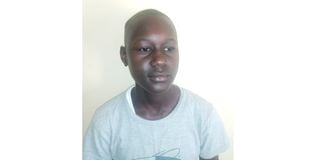KCPE exam: Visually impaired pupil beats odds to emerge top

Musyoka Kings Kelvin. He scored 401 marks at AIC Kathonzweni Primary School in Makueni County.
When Education CS George Magoha mentioned Musyoka Kings Kelvin among the top 10 KCPE exam candidates in the special category, his parents and teachers thought there was a mix-up.
The 13-year-old boy, who scored 401 marks at AIC Kathonzweni Primary School in Makueni County, has battled visual impairment since childhood. He emerged third nationally in the special needs education category.
“He has been in and out of Kikuyu Mission Hospital, where he has undergone corrective surgery twice. At school, we had requested the teachers to make him sit at the front of the class. By the time he was sitting the exam, I never imagined he could attain 200 marks,” his mother Jackline Musyoka told Nation.Africa on Monday.
AIC Kathonzweni Primary School headteacher Benjamin Nyungu said Kings was an average pupil.
“We expected him to pass the exam but not as much as he did. He has done us proud,” said Mr Nyungu.
But the teenager, who hopes to join Mang’u High School, was convinced that he would excel in the final exam. A copy of his official results seen by Nation.Africa shows that he scored 85 marks in both English and mathematics, 79 in social studies and 76 in both Kiswahili and science.
“My secret formula was working smart rather than working hard. You see, learning should be an enjoyable undertaking. I had created a study schedule so that I balance studies and co-curriculum activities,” he said. Kings also attributed his good performance to his discipline and the supportive environment at school and at home.
“The teachers and my classmates were always supportive,” he said.
Prof Magoha said the number of candidates with special needs was lower in 2021 (2,483) compared to 2020 (2,675).
The categories with the highest number of candidates with special needs in the 2021 KCPE examination were those with physical disabilities (1,013), followed by those with hearing impairment (734).





